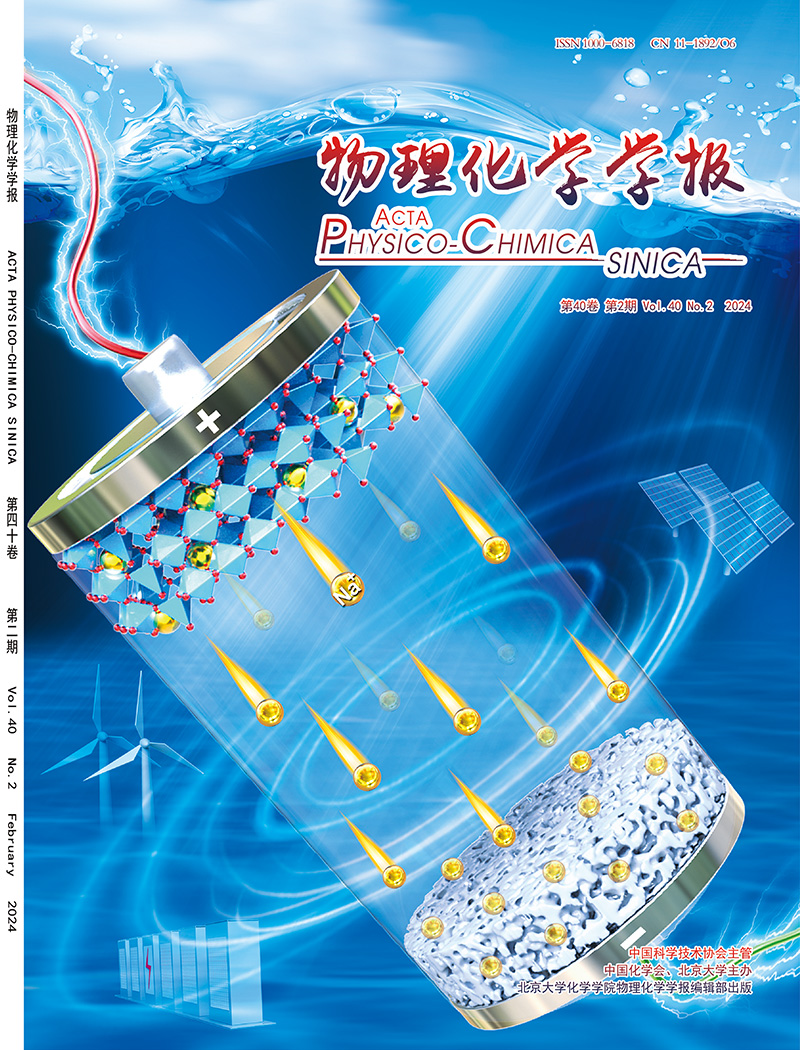用于光电催化肿瘤治疗的高效、靶向和可追溯的钙钛矿纳米晶体
IF 10.8
2区 化学
Q1 CHEMISTRY, PHYSICAL
引用次数: 0
摘要
金属卤化物钙钛矿由于其独特的多维晶体结构具有优异的光学和电子性能,已成为光电子学中非常有前途的材料。这些材料表现出卓越的荧光成像和跟踪能力,以及高效的光电转换,使其适用于广泛的应用。然而,尽管它们具有巨大的潜力,但它们的水稳定性差带来了重大挑战,特别是在生物医学领域,如药物输送系统、生物成像和光电催化肿瘤治疗。这一限制阻碍了它们在医疗和诊断方面的实际应用。在这项研究中,我们成功地合成了CsSn0.5Pb0.5Br3钙钛矿纳米晶体(pens),并将其与甲氨喋呤-壳聚糖-叶酸(MTX-CS-FA)偶联,从而解决了水稳定性问题,得到了创新的绿色发光纳米粒子PeNCs@MTX-CS-FA。这些纳米颗粒表现出显著的水稳定性,在长达228天的时间内保持其结构和功能的完整性,这一显著的改进使其能够在复杂的生物环境中应用。在可见光照射下,纳米颗粒表现出双重作用的治疗机制。钙钛矿有效地产生电子和活性氧(ROS),诱导肿瘤细胞氧化应激。同时,光产生的孔氧化谷胱甘肽(GSH),一种在肿瘤细胞中典型的过度表达以防止氧化损伤的分子。纳米颗粒通过消耗GSH,削弱肿瘤细胞的防御机制,从而增强ROS引起的氧化损伤。此外,甲氨蝶呤(MTX),一种整合到系统中的化疗药物,抑制二氢叶酸还原酶(DHFR)的活性。这种抑制破坏了肿瘤细胞的代谢,特别是核苷酸合成,导致脂质过氧化和随后的细胞死亡。总之,这些机制产生了强有力的协同治疗效果。通过小鼠体内抗肿瘤实验验证了PeNCs@MTX-CS-FA纳米颗粒的治疗效果。总剂量为2.4 mg的纳米颗粒使肿瘤体积减少63.68%,肿瘤重量减少63.26%,显示出明显的肿瘤生长抑制作用。生物安全性评价进一步证实了纳米颗粒的生物相容性。值得注意的是,它们在没有分解的情况下以荧光形式从小鼠体内排出,确保了最小的长期毒性。这种安全的排泄途径强调了这些纳米颗粒在临床应用中重复使用的可行性。总的来说,这项研究强调了金属卤化物钙钛矿在癌症治疗中的转化潜力。通过克服先前限制其生物医学应用的水稳定性限制,PeNCs@MTX-CS-FA纳米颗粒在实时生物成像和有效的光电催化化疗方面表现出出色的能力,从而为未来生物医学科学的创新铺平了道路。本文章由计算机程序翻译,如有差异,请以英文原文为准。

Highly efficient, targeted, and traceable perovskite nanocrystals for photoelectrocatalytic oncotherapy
Metal halide perovskites have emerged as highly promising materials in optoelectronics, owing to their unique multidimensional crystal structures that impart exceptional optical and electronic properties. These materials exhibit remarkable fluorescence imaging and tracking capabilities, as well as efficient photoelectric conversion, making them suitable for a broad range of applications. Nevertheless, despite their significant potential, their poor water stability has posed a major challenge, particularly in biomedical fields such as drug delivery systems, biological imaging, and photoelectrocatalytic oncotherapy. This limitation has hindered their practical use in medical treatments and diagnostics. In this study, we address the water stability issue by successfully synthesizing CsSn0.5Pb0.5Br3 perovskite nanocrystals (PeNCs) and conjugating them with methotrexate-chitosan-folic acid (MTX-CS-FA), resulting in innovative green light-emitting PeNCs@MTX-CS-FA nanoparticles. These nanoparticles exhibited remarkable water stability, maintaining their structural and functional integrity for up to 228 days, a significant improvement that enables their application in complex biological environments. Under visible light illumination, the nanoparticles demonstrated a dual-action therapeutic mechanism. The perovskites effectively generated electrons and reactive oxygen species (ROS), inducing oxidative stress in tumor cells. At the same time, photogenerated holes oxidized glutathione (GSH), a molecule that is typically overexpressed in tumor cells to protect against oxidative damage. By depleting GSH, the nanoparticles weakened the tumor cells' defense mechanisms, thereby enhancing the oxidative damage caused by ROS. In addition, methotrexate (MTX), a chemotherapeutic agent integrated into the system, inhibited dihydrofolate reductase (DHFR) activity. This inhibition disrupted tumor cell metabolism, particularly nucleotide synthesis, leading to lipid peroxidation and subsequent cell death. Together, these mechanisms generated a potent, synergistic therapeutic effect. The therapeutic efficacy of the PeNCs@MTX-CS-FA nanoparticles was validated through in vivo antitumor experiments in mice. A total dose of 2.4 mg of nanoparticles resulted in a 63.68 % reduction in tumor volume and a 63.26 % decrease in tumor weight, demonstrating significant tumor growth suppression. Biological safety evaluations further confirmed the nanoparticles' biocompatibility. Notably, they were excreted from the mice in their fluorescent form without decomposition, ensuring minimal long-term toxicity. This safe excretion pathway underscores the feasibility of repeated use of these nanoparticles in clinical applications. Overall, this study highlights the transformative potential of metal halide perovskites in cancer treatment. By overcoming the water stability limitations that have previously constrained their biomedical applications, the PeNCs@MTX-CS-FA nanoparticles exhibited outstanding capabilities in real-time bioimaging and effective photoelectrocatalytic chemotherapy, thus paving the way for future innovations in biomedical science.
求助全文
通过发布文献求助,成功后即可免费获取论文全文。
去求助

 求助内容:
求助内容: 应助结果提醒方式:
应助结果提醒方式:


